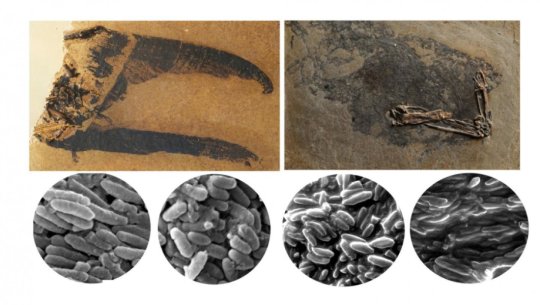[ad_1]
Iridescence is responsible for some of the most striking visual displays in the animal kingdom. Now, thanks to a new study of feathers from almost 100 modern bird species, scientists have gained new insights into how this colour diversity evolved.
Iridescence refers to the phenomena where colour changes when an object is viewed from different angles. Birds produce this varying coloration in their feathers by using nanoscale arrays of melanin-filled organelles (melanosomes) layered with keratin. In this form of structural colouration, the shapes of melanosomes together with the thickness of keratin layers determine what colour is produced.
While melanosome morphology has previously been used to predict colour in fossil animals, melanosome variation in iridescent feathers has not been analysed on as large a scale until this study.
As reported in the journal Evolution, a team of University of Bristol researchers used scanning electron microscopy to quantify melanosome extracts from the feathers of 97 species of modern birds with iridescent plumage, taken from the collections of the Zoological Museum of Copenhagen.
The study showed that iridescent feathers contain the most varied melanosome morphologies of all types of bird coloration sampled to date. Unlike black, grey and brown feathers that always contain solid melanosomes, iridescent feathers can contain melanosomes that are hollow and/or flattened.
“We found that melanosomes in modern iridescent feathers are more diverse in shape than those found in grey, black or brown feathers combined (that also contain melanosomes),” said lead author Klara Nordén, who conducted the study during her undergraduate years at Bristol’s School of Earth Sciences. “It is already known that structural coloration is responsible for 70 per cent of the colour variability in birds. These two facts might be coupled — birds evolved varied forms of melanosomes to achieve ever greater diversity in colour.
“I wanted to find out if we could improve current predictive models for fossil colour based on melanosome morphology by including all types of melanosomes found in iridescent feathers.”
Dr Jakob Vinther, co-author of the study and a leading researcher in the field of paleocolour at Bristol’s School of Biological Sciences, had already collected the perfect fossil samples to test the new model on.
“We had sampled Scaniacypselus, related to modern tree swifts, and Primotrogon, ancestor to modern trogons. These groups are iridescent today and have flat and hollow melanosomes. Did their 48-million-year-old ancestors from Germany also have iridescent plumage?”
Interestingly, the model predicted that Primotrogon probably was iridescent, but it used solid rather than hollow melanosomes, unlike its modern descendants.
“This demonstrates how we now have the tools to map out the evolution of iridescence in fossil lineages,” said Klara, who is now a PhD student at Princeton University. “It opens the door to many new discoveries of dazzling displays in fossil birds and other dinosaurs.”
The current study focused on mapping out how melanosomes vary in iridescent feathers. Further avenues of research might examine why birds utilise such diversity of melanosome types in iridescent feathers. These insights could ultimately enhance our understanding of why fossil birds or dinosaurs might have used such morphologies, revealing something about their behaviour.
Story Source:
Materials provided by University of Bristol. Note: Content may be edited for style and length.
[ad_2]















